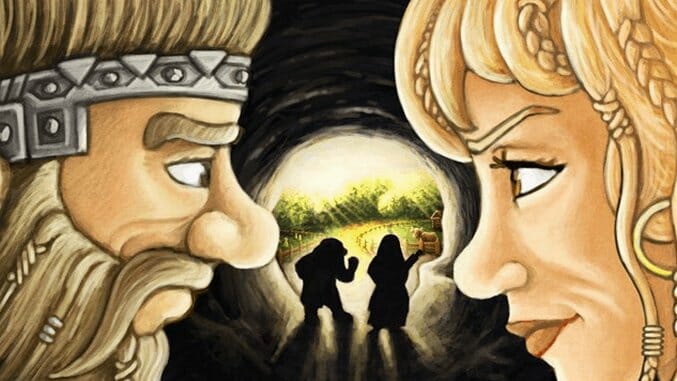Caverna Cave vs. Cave Is a Solid Two-Player Experience

If you’re into boardgaming even a little bit, then you’re probably familiar with a man called Uwe Rosenberg, the designer of some of the top-rated strategy games on the market, including Agricola, Le Havre, and Caverna. His main titles revolve around resource collection and worker placement, forcing players to consider scarcity early in games but simultaneously build some kind of engines to produce more output later. His games in this vein seem to be getting longer and heavier (I have a review copy of A Feast for Odin, one of his newest titles but haven’t yet been able to block off a few days to play it) which made the release and arrival of a new, short, two-player title, Caverna: Ecks vs. Sever … er, Cave vs. Cave, a bit of a pleasant surprise.
Based on Caverna, a heavy, two-hour game that is a sort of kicked-up Agricola involving cave-dwelling farmers (just go with it), Caverna: Cave vs. Cave takes the theme but drops much of the complexity for a two-person game that you can play in under half an hour. The game’s end goal is victory points, but there are only two ways to get points in Caverna: Cave vs. Cave: the rooms you build in your “cave” are worth victory points, 2 to 12, and you get a point per gold unit in your supply at game end, up to a maximum of 19.
As with Uwe’s other games, the actions you can take on each turn are strictly defined, and the options improve as the game progresses. Caverna: Cave vs. Cave is played over eight rounds, and in each round, there are action tiles available for each player to choose; if you choose one, your opponent can’t use that action tile until the next round. In the first round, there are five action tiles available, but by the eighth round there will be twelve, with the final action tile only available to the player with the most gold. Most action tiles include multiple actions, including excavating a space on your board, ‘furnishing’ one or two rooms (buying a room tile from a common supply), gaining resources, and ‘visiting’ your existing rooms to use the actions available on them. Many rooms offer the power to convert resources into more valuable resources, like trading one emmer (a type of ancient wheat, to which my wife said, “who the *&^% knows what emmer is?”) for three food, or three flax for four food and two gold, for example (my wife also wants you to know that the flax token looks like a bunch of asparagus, the stone looks like a pointy gray tomato, the gold looks like Honey Comb cereal, and the emmer looks like Bart Simpson’s head. She wasn’t a fan of this game).






































